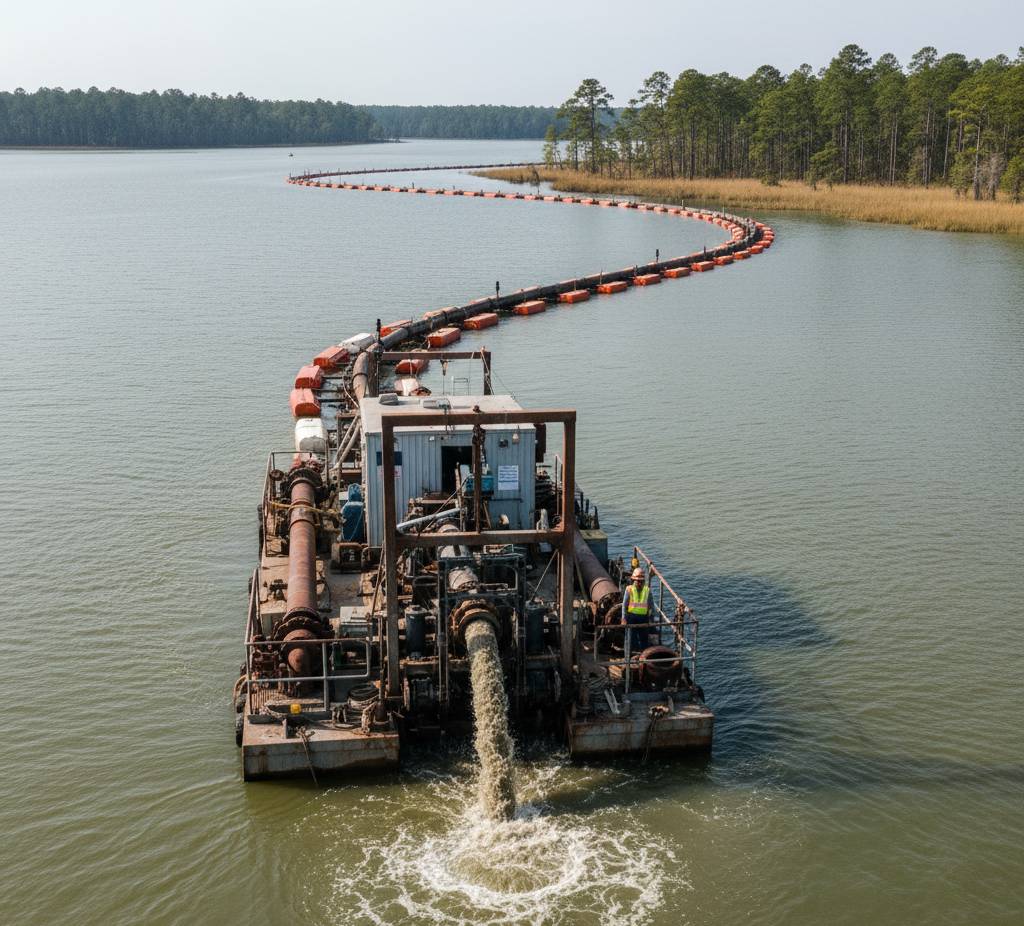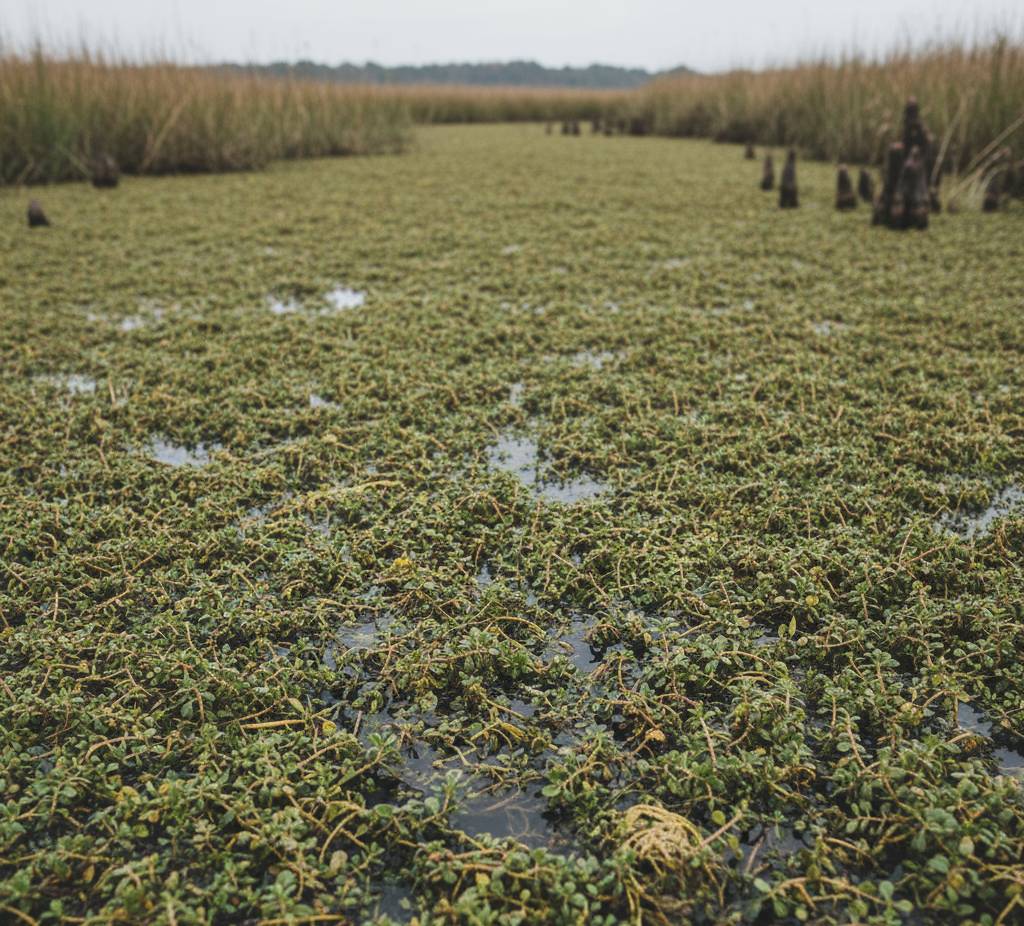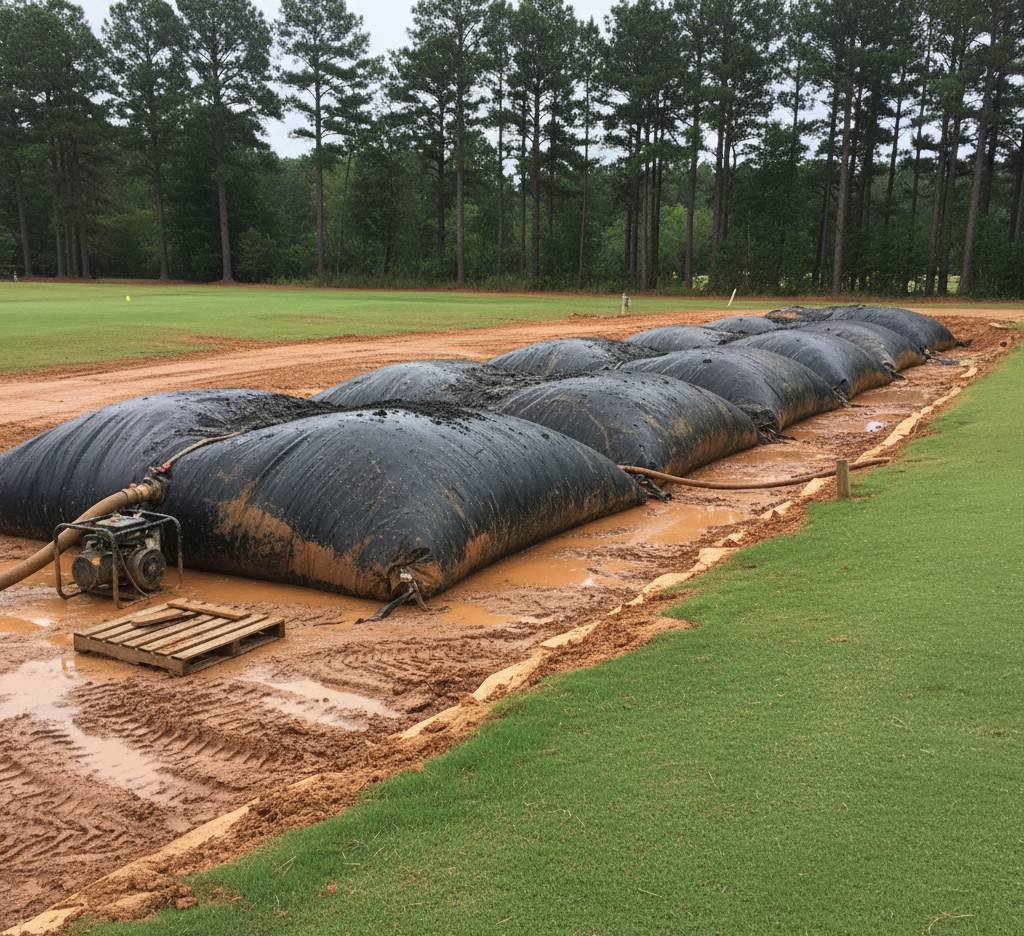Restoring ICW Canal Depth, Golf Lagoons & Coastal Ponds in Myrtle Beach, Conway & Carolina Forest
Carolina Forest, SC Dredging Solutions for ICW Canals & Golf Lagoons
We specialize in sediment removal for waterfront HOAs, resort communities, and ICW-connected canals throughout the Myrtle Beach, North Myrtle Beach, and Conway areas. Focus on sand migration, storm silt, and algae in resort lagoons.
- ICW Canal & Waterfront Community Dredging
- Golf Course Lagoon & Resort Water Feature Restoration
- Sand Migration & Coastal Storm Sediment Removal
- HOA Pond Aesthetics & Drainage Improvement
- Local Expertise in Grand Strand Water Systems
Why Choose Us for Grand Strand Dredging & Pond Maintenance
Trusted by HOAs, resort communities, and property managers across the Myrtle Beach, North Myrtle Beach, and Coastal Pee Dee regions.
Lagoon & Canal Access Restoration
We focus on restoring deep water access for boats in ICW canals and maintaining the visual appeal of resort lagoons. This ensures that amenities for residents and guests in North Myrtle Beach and Carolina Forest remain fully functional.
Sand Migration & Storm Silt Management
Expertise in removing fine beach sand and heavy silt deposited into canals and ponds following coastal storms and hurricane surge. We rapidly clear waterways to restore usability and prevent further erosion issues.
Resort & Golf Community Focus
Dedicated service for gated resort communities, short-term rental neighborhoods, and golf clubs that require dredging with minimal disruption and high aesthetic standards, understanding the importance of the tourism season.
HOA Water Quality & Aesthetics
Specialized techniques to remove organic muck and sludge from community ponds. This dramatically reduces odors and severe algae blooms that compromise quality of life and the overall appeal of a Myrtle Beach neighborhood.
Seasonal Timing & Tourism Planning
We schedule projects in the off-season (late fall to early spring) to avoid disruption during peak tourism months and the busiest rental periods, ensuring your community's water features are ready for summer guests.
Drainage and Inflow/Outflow Clearing
Restoring the proper function of community lakes and retention ponds by clearing sand and sediment from inflow and outflow structures to prevent localized flooding and standing, stagnant water in neighborhoods like Conway and Socastee.
Our Dredging Services
Comprehensive solutions for Carolina Forest waterways, from residential ponds to commercial marinas

Mechanical Dredging
Ideal for tight access, shallow coves, and dock and shoreline work on lakes like Lake Murray, Lake Keowee, and Lake Greenwood. We use sectional barges for precision sediment removal in smaller HOA lakes and ponds, handling heavy red clay and dense debris.

Hydraulic Sediment Removal
Best for large-scale operations on major water bodies such as Lake Marion and Lake Moultrie, and long reaches of ICW canals. We pump fine silt and muck over long distances to remote dewatering sites or tidal systems.

Comprehensive Sediment Management
A turnkey approach that ensures compliance with SCDHEC guidance. This includes on-site dewatering using methods suitable for diverse SC soils (sandy Lowcountry versus clay-heavy Upstate) and approved disposal or beneficial reuse planning.

Aquatic Vegetation Management
Targeted removal of aggressive SC aquatic weeds—like hydrilla, alligator weed, and elodea—to combat the effects of shallow water and nutrient-rich sediment that cause severe algal blooms.

Sediment Dewatering Solutions
Installation and management of Geotextile tubes for efficient dewatering on HOAs, golf courses, and resort communities. We also design and manage upland pad drying operations where available land permits.

Continuous Waterway Management
Post-event cleanup and maintenance after major storms or hurricanes. We offer season-based lake management programs to prevent the re-accumulation of sediment and preserve depths after major summer lake traffic.
Restore Your Grand Strand Community's Water Appeal & Access
Contact us today for a free HOA, Resort, or Marina consultation and on-site assessment. We specialize in planning storm-related cleanups and off-season maintenance for maximum efficiency and minimal guest disruption.
Get a Detailed Quote Give Us a CallFrequently Asked Questions
Common questions about dredging in the Grand Strand, ICW, and Coastal Pee Dee regions
Yes. Coastal storms and hurricane surge often wash fine beach sand and sediment into ICW-connected canals and resort lagoons. Our mechanical dredging equipment is effective at removing this sand and restoring the channel depth necessary for boat access and water circulation.
Golf and resort properties require a clean, high-quality aesthetic. We use low-impact equipment to remove accumulated sediment, organic muck, and built-up algae. This not only clarifies the water but also prevents wear on irrigation pump intakes, preserving the course's infrastructure.
Waterways directly connected to the Intracoastal Waterway (ICW) or those exposed to high sand migration may require targeted maintenance every 7-10 years. Isolated lagoons and retention ponds should be assessed every 5 years, particularly after a major storm season, to prevent sediment from impacting drainage.
Yes. Odors and severe algae growth are often fueled by organic sludge and nutrient-rich sediment at the bottom of the pond. Removing this material eliminates the primary food source, leading to a healthier, clearer, and far less odorous water feature for residents and guests.
The ideal time is the off-season—typically late fall, winter, and early spring. This avoids peak tourist months when disruption is unacceptable, and it is usually outside the most active part of the hurricane season, allowing for more reliable project scheduling.
We use advanced low-impact techniques and work closely with HOA and property managers to schedule the most disruptive phases (e.g., equipment mobilization) during weekdays or outside peak hours. Our goal is to minimize noise and traffic impacts on nearby rentals and permanent residents.
Both are options. Clean sand and silt removed from ICW canals and ponds can often be dewatered and reused on-site for grading, landscaping, or creating protective berms. We also manage offsite disposal for material that is not suitable for reuse, providing a turnkey sediment management solution.
For resort and hospitality communities, water features are central amenities. Proactive lagoon maintenance—removing sediment before it causes severe issues—protects the investment, ensures water quality for guest enjoyment, and prevents costly emergency repairs after sediment buildup threatens a system's function.
Service Areas and Regions of South Carolina
We provide expert dredging services for private lakes, corporate ponds, and large-scale public waterways, covering the entire state from inland reservoirs to coastal marinas and tidal marsh systems.
1. Lowcountry & Coastal
The historic coastal plain defined by tidal marshes, barrier islands, and waterways like the Ashley, Cooper, and Edisto Rivers. This region features major port activity and extensive recreational waterways.
Key SC Locations:
2. Grand Strand & Coastal Pee Dee
Famous for its sandy beaches and tourism, this region is traversed by the Intracoastal Waterway (ICW) and the Waccamaw River. Its focus is on maintaining resort lagoons and battling sediment from beach sand runoff and coastal flooding.
Key SC Locations:
3. Midlands
The state's center, dominated by the Congaree, Broad, and Saluda Rivers, and home to major bodies of water like Lake Murray, Lake Marion, and Lake Moultrie. We serve the capital city and the state's largest lakes.
Key SC Locations:
4. Upstate – Greenville/Spartanburg Metro
Defined by the foothills of the Appalachian Mountains and major reservoirs like Lake Keowee, Lake Jocassee, and Lake Greenwood. Our work focuses on managing the influx of dense red clay sediment that flows into water bodies from surrounding terrain.
Key SC Locations:
5. Upstate – York County / Lake Wylie Region
The fastest-growing SC region, these suburbs are situated along the Catawba River and the Lake Wylie shoreline, sharing a distinct culture with the nearby Charlotte NC metro area. Dredging here is often for coves and erosion control.
Key SC Locations:
6. Central Savannah River Area (CSRA)
This region borders Georgia, utilizing the Savannah River system and connecting waterways. Projects often involve maintaining municipal, industrial, and private waterfronts influenced by the nearby Augusta metro area.
Key SC Locations:
Inquire for special projects outside these core SC areas, including nearby GA and NC border communities.